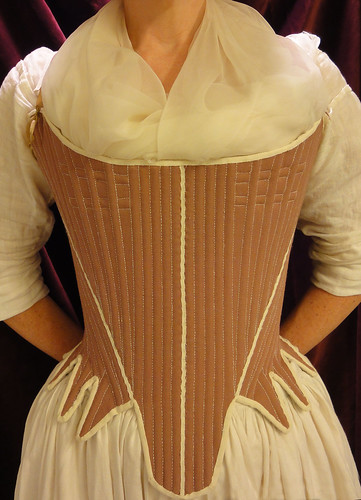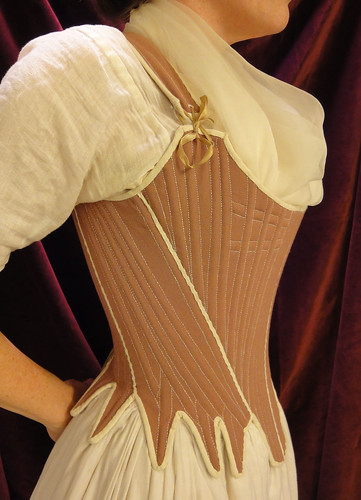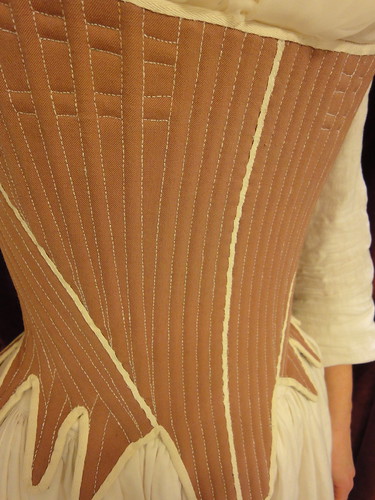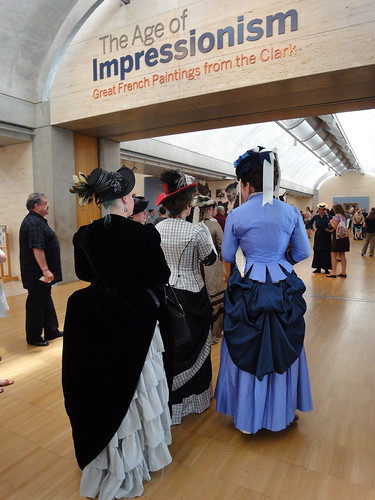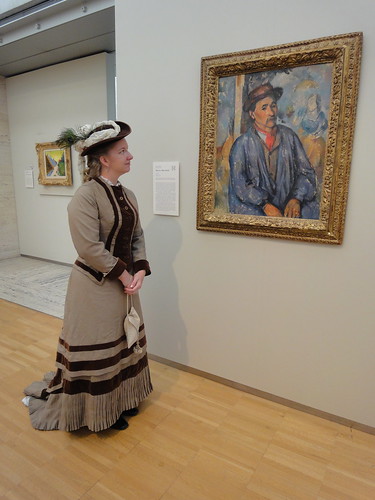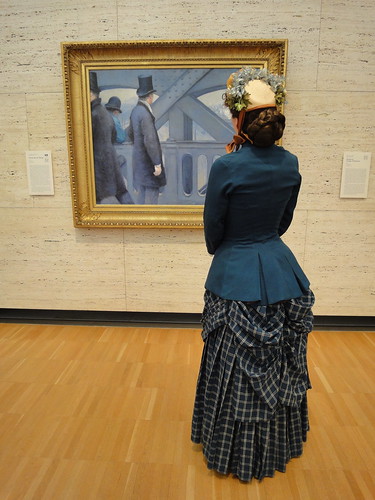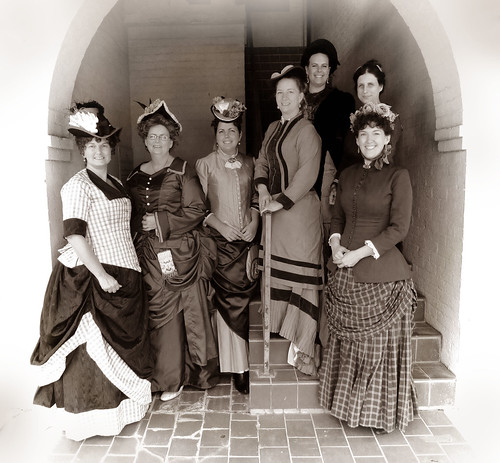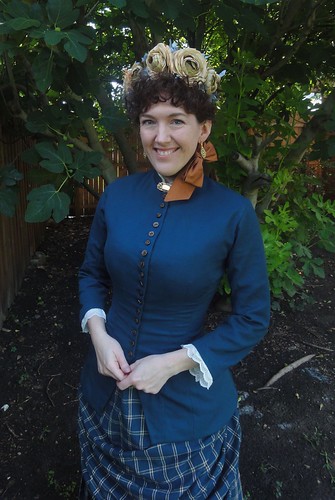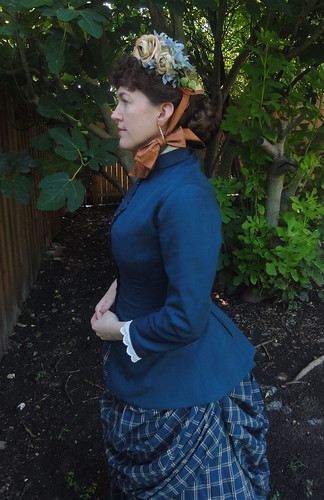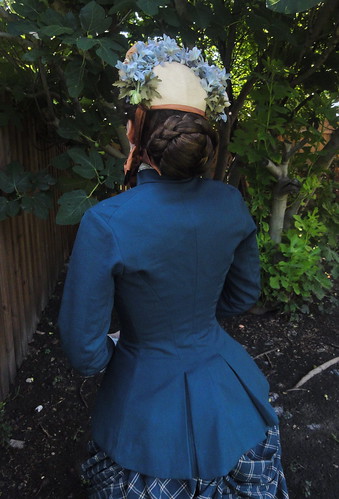I used the 1790 brown jean stays pattern in Jill Salen's Corsets. The original stays were quite tiny, but they had great proportions to them. I enlarged the pattern by 118% on my copier, added an inch to the length, and that's pretty much it. The original owner was obviously bustier than I am, so I probably could have taken some room out of the top, but it still works fine as it is. I also changed it from front opening to back opening so I wouldn't have to be quite as precise with the fitting.
My stays are made with a double layer of linen canvas with a layer of pink wool twill on the outside. They have a lightweight linen lining that I stitched into place once everything else was finished. The boning channels are hand sewn with 60/2 linen thread, and the different sections of the corset are whip-stitched together with 16/2 linen thread, which BTW was probably overkill because it was very thick and heavy. The joins are covered with 1/8" cotton tape, and the edges of the corset are bound with 1/2" cotton tape. It is boned with 5/8" half-round cane.
I made a few rookie mistakes with this project since it was my first time making anything as complicated as a pair of hand-sewn stays, but I learned a ton and I'm sure I'll do much better next time. I also want to give special thanks to the blog Before the Automobile. Her most recent stays are a TRUE masterpiece, and her amazing work and incredibly helpful photos and notes are what inspired me to finally be brave enough to make some hand-sewn stays of my own.

